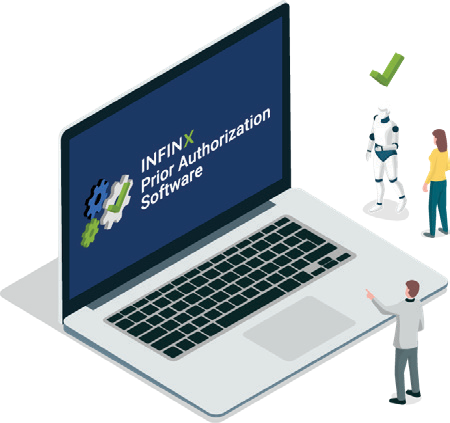White Paper
Successful Tech-Enabled RCM Services Using Advanced Automation and AI Technology
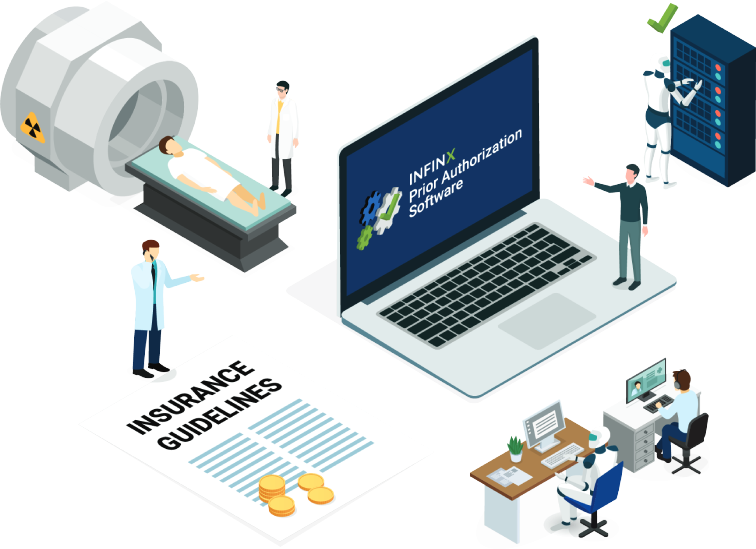
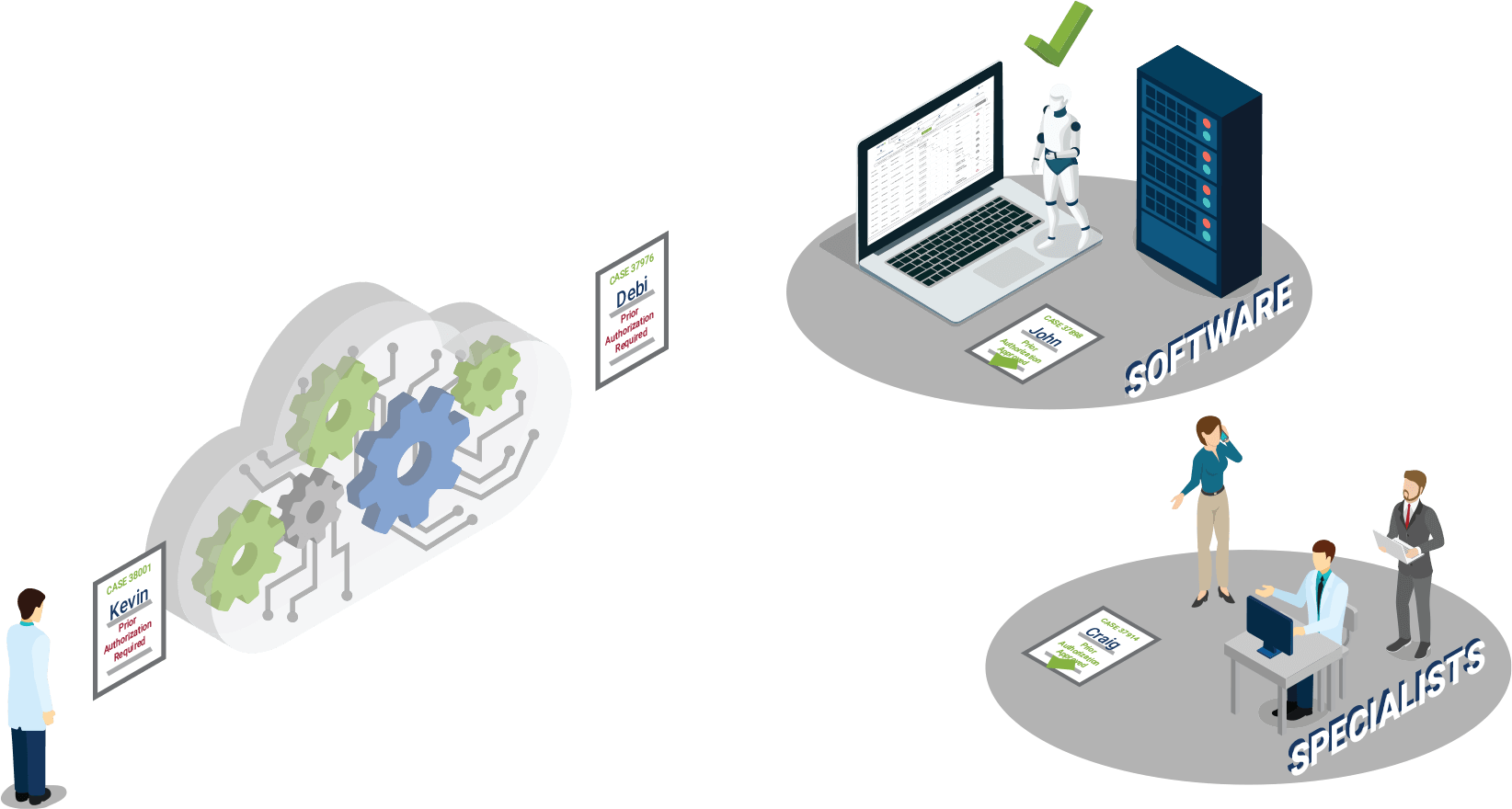
Executive Summary
Bringing technology and humans together to create tech-enabled services has elevated healthcare in a myriad of ways. From robotic surgery assistance to outcomes management to business operations, tech-enabled services improve the patient experience and allow clinicians to focus more on providing care and less on administrative burdens. Zeroing in on prior authorization, AR optimization, and insurance discovery, we look deep at how artificial intelligence (AI) and machine learning complements rather than replaces human intelligence.
Blending Tech-Enabled Services — the Best of Both Worlds
In business today, emerging tech-enabled services bring advanced technology together with human intelligence to create supercharged processes capable of far more than before. In the healthcare field, specifically, entities are finding creative and effective ways to leverage innovative technology with human intellect to create a robust and integrated ecosystem ready to meet today’s challenges.
Rapidly advancing technology is at the point where many see completely automated solutions as the next logical step. However, computers are unable to do it all. Decision making, as it applies to the healthcare industry, still requires human intellect through tech-enabled services to meet the demands required in this quickly changing field.
According to a recent survey conducted by MIT Technology and GE Healthcare, 79% of healthcare professionals have indicated that AI-supported changes have helped mitigate provider burnout, with over a third of respondents seeing a significant reduction in administrative burdens due to improved automation.¹ And while we know that only the tip of the iceberg has been mainstreamed, the opportunities for tech-enabled automation are vast.
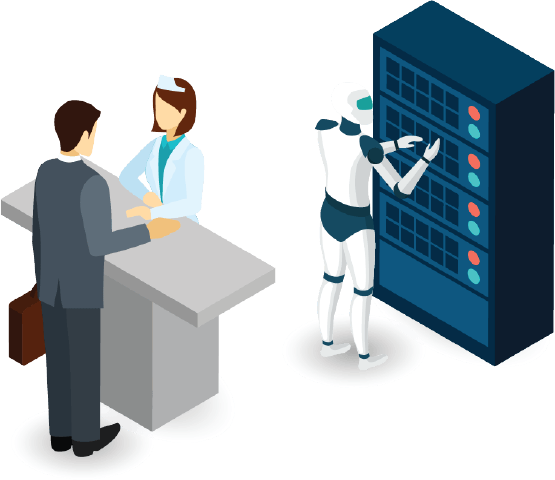
Positively Impacting the Overall Bottom Line
Healthcare is in a transitional phase with massive changes to the payment structure underway, as well as further tightening of reimbursement for all specialties and services. The timing is perfect for implementing tech-enabled services as a way to capture more revenue and streamline the overall business services functions.
Opportunities for Foundational Improvements to Workflow and Employee Engagement
While there has been abundant speculation on the impact AI will have on the human workforce in terms of task replacement exposure, many now agree that there will be a natural settling point that merges digital augmentation and human intelligence. With the healthcare industry rapidly adopting AI-enhanced solutions, one particular challenge going forward will be to minimize disruption and guide impacted employees towards higher-value and more rewarding initiatives and opportunities.
Capturing More Revenue with Tech-Enabled Prior Authorizations
While the original intention set by utilization review and prior authorizations (PAs) was a good one, the mechanics of administering them has created a cumbersome and unnecessarily awkward process with frequent denials and patient care issues. A recent report from the AMA notes that almost 90% of physicians report that patient care is negatively affected and often results in delays in care up to and including care abandonment.2
A Targeted Approach
According to the 2019 CAQH Index on Conducting Electronic Business Transactions, as much as 87% of medical practices use a manual system
to manage PAs at the cost of $14.24 per pre-authorization. Add to that the unworked claim denials experienced from missing or rejected PAs, and the costs are astronomical.3

By utilizing an automated system, the cost per PA would average $1.93 each, bringing a savings of $12.31 per occurrence.4 With a tech-enabled PA solution that leverages AI, predictive analysis, and machine learning, supported by experienced prior authorization specialists, the entire process can be managed in real-time for treatment, surgical procedures, advanced testing, medications, rehabilitation, etc., including:
- Determining necessity based on patient’s referring diagnosis and insurance requirements and guidelines
- Collecting necessary information on patient demographics, verifying insurance benefits, and confirming allowable care,
- Submitting completed PA to the appropriate insurance payer for review,
- Following up by monitoring payer portals 24/7 and retrieving case status updates,
- Generating and resubmitting appeals, if necessary
- Supporting emergent or complex PAs through a team of highly-training specialists available to complete and finalize
outlier situations, - Providing full transparency into PA workflow using analytics and status reporting to track every claim.
By automating PAs using AI-driven software, PAs can be determined in real-time to allow patient scheduling to commence immediately, lessening the chance of patient abandonment and revenue loss.

Aging AR Revenue Recovery Using Tech-Enabled Solutions
It seems that often priorities in healthcare revolve around patient care and treatment, but equally important is effectively billing and collecting the revenue associated with that care. Unfortunately, the system often breaks down once the claims have left the office, and readily forthcoming money is accepted.
Revenue that is a little more challenging to acquire is tied up in the AR, and collecting it often requires hands-on follow-up that is sometimes postponed or ignored in favor of more urgent administrative tasks.
As an example, the Centers for Medicare and Medicaid Services (CMS) denies, on average, 26 percent of all claims, and of those, 40 percent are never resubmitted even though over 2/3’s are recoverable, and 90 percent are preventable.5
By focusing on a tech-enabled solution on tackling the AR to reduce days outstanding, revenue that is owed can be collected and claims resolved. The impact is three-fold:
1. Increased Cash Flow and Overall Cash Position—it’s almost a certainty that the bottom-line will improve when money is collected quickly and efficiently. With the additional revenue, day-to-day operations can be funded, expansion plans can be initiated, or capital equipment can be pursued.
2. Reduced Administrative Costs—by automating the billing and AR functions, the burdensome follow-up would be eliminated, and billing personnel could be redeployed to higher-level functions, including improving the patient experience.
3. Analytics-Derived Operational Improvements—With knowledge comes the ability to make overall improvements in the operations functioning, including enhancing patient flow, improving patient portion collections, advancing cash controls, and preventing future errors in coding and billing
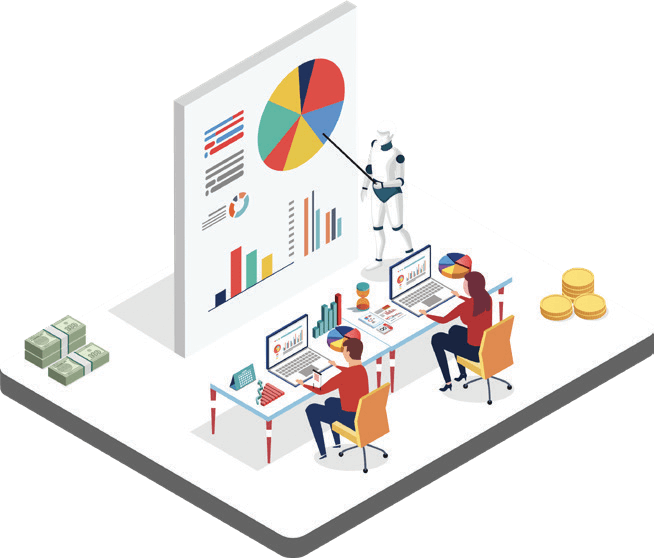
The Groundbreaking Impact of AI-Driven AR Optimization
By leveraging AI, automation, and machine learning through a tech-enabled solution, outstanding third-party aging AR activities can be turned into actionable insights optimizing recovery and decreasing write-offs.
With AI and machine learning, a curated knowledge base using predictive rules can determine the “next best course of action” and prioritize the resolution effort to maximize dollar recovery. This concentrates the efforts of the highly specialized AR recovery team on best use functions.
With a concentrated approach, denials management can be tracked, and each denial can be automatically appealed, if necessary so that revenue isn’t lost in the system or abandoned prematurely. Denials that used to sit untouched can now be addressed and processed using state-of-the-art automated systems that give upto-date progress updates 24/7 and detailed analytics reporting – overall, especially
useful when negotiating third-party payer contracts.
Using Tech-Enabled Insurance Discovery Effectively
Every healthcare provider or organizational representative has experienced the feeling of defeat when reviewing their uncollectible bad debt. Even with the best business practices, ironclad policies, and strong intake personnel training, there are inevitably insurance claims that are rejected or denied with balances owed transferring to patient responsibility.
We know for sure—that throughout the healthcare spectrum, patients frequently present for care without understanding their insurance coverage or benefits. Phrases like “annual maximums,” “remaining deductible,” and “explanation of benefits” may be overwhelming to patients that are unfamiliar with insurance terms and how they’re treated within the industry. The fact that an organization has ended up with an outstanding amount is often not from misrepresentation, but merely misunderstanding.
Couple that with the growth of patient consumerism and High Deductible Health Plans (HDHP) in recent years, we see a cascading problem that can only worsen with time. The key may be early intervention using a cloud-based AI-driven Insurance Discovery solution.
The Insurance Discovery Process Defined
Once the organization’s patient information is downloaded into a proprietary insurance discovery system, AI-driven software using machine learning capabilities, deep data mining and probabilistic analytics gleans, checks, and double-checks information. Access to this information comes from a sophisticated network of insurance payer clearinghouses and direct payer connections and is supplemented through a network of public and private databases.
Collectively, this information is then used to identify undisclosed coverage and socio-demographic identifiers to correct and update claims so that they can be processed by a team of highly qualified billing experts and plans can begin to pay. Part of understanding insurance discovery is recognizing one issue that plays a big part—timing!
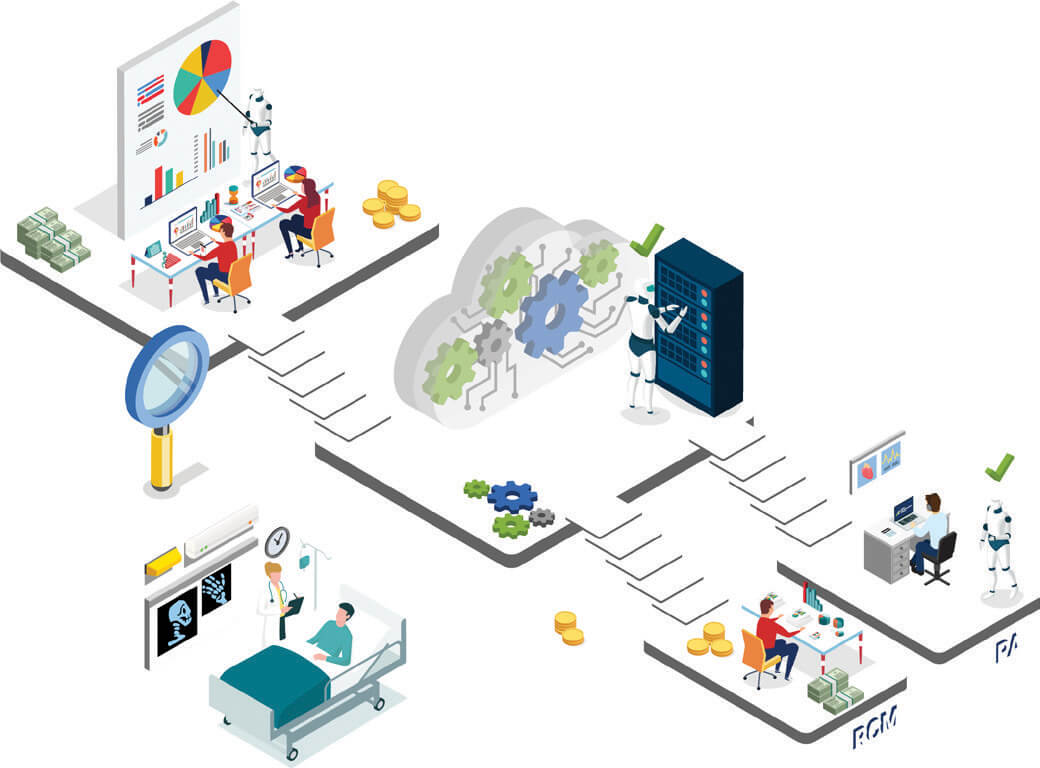
Do Tech-Enabled Systems Meet or Exceed Compliance Standards?
With a tech-enabled program, all information is integrated seamlessly from the EHR/EMR system by utilizing an HL7 or API-based bi-directional integration. It offers a comprehensive dashboard that allows instantaneous status checks. This exceeds all standards expected, including those set by HIPAA.
Moving into the future, AI-driven technology will bring improvements to not only clinical care but also patient access and revenue cycle management, further improving operational efficiency. Patients are already demanding low touch, high technology solutions that bring easy access and convenience. Even now, patients are far less willing to tolerate the inefficiencies brought with manual processes; they want and demand expert resolution.
In the future, solutions will be moving from descriptive analytics toward the more sophisticated predictive analytics that estimates the likelihood of a future outcome based on patterns in the historical data. But for now, tech-enabled solutions may actually be the most cost-effective and efficient way to leverage business operations in healthcare
For more information on how your organization can benefit from using a tech-enabled service solution, visit www.infinx.com.
About Infinx
Infinx provides innovative and scalable payment lifecycle solutions for healthcare practices. Combining an intelligent, cloud-based platform driven by artificial intelligence and automation, with our trained and certified prior authorization, coding and billing specialists, we help clients realize revenue, enabling them to shift focus from administrative details to billable patient care.
